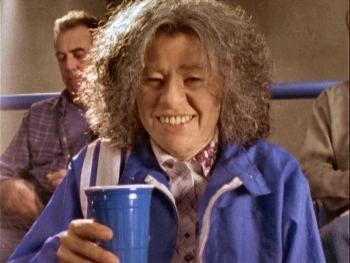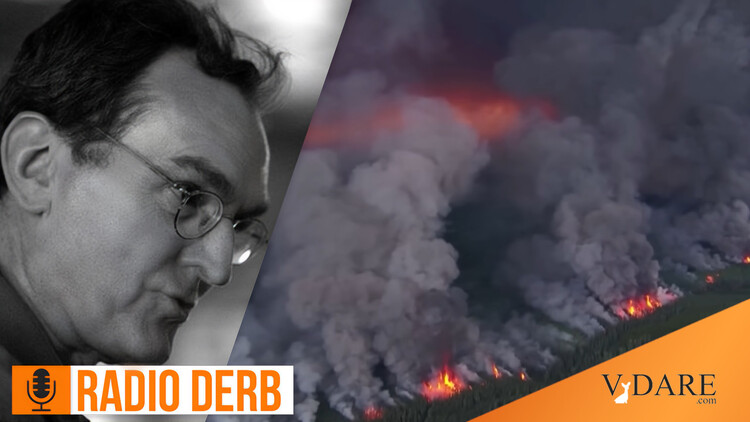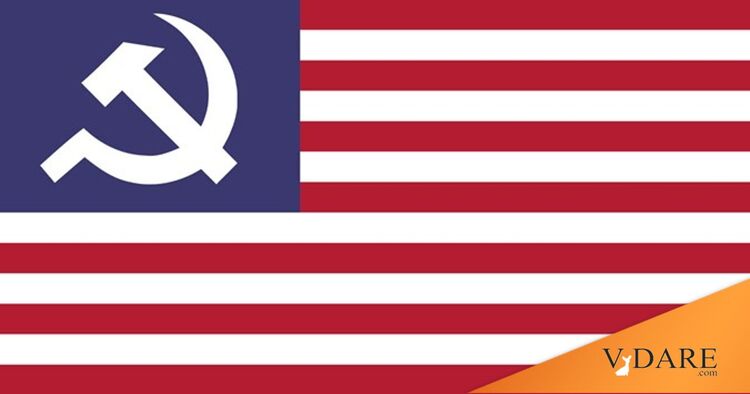Earlier (2006) : Winter Races—And The Races Of Man
From the New York Times news section:
The Asian American Pipeline in Figure Skating
The chain of success stretches back for years and has only strengthened as more have poured into the sport and become Olympic stars.
By Andrew Keh
Published Feb. 8, 2022
Updated Feb. 10, 2022
阅读简体中文版閱讀繁體中文版… For the second consecutive Winter Games, four of the six figure skaters who arrived to represent the United States in the singles events were Asian American: Karen Chen, Nathan Chen, Alysa Liu and Vincent Zhou. A fifth Asian American skater, Madison Chock, is competing in the ice dancing event.
In the United States, a country where Asians and sports are not often intertwined in the popular imagination, figure skating is now plainly an Asian American sport. Asians make up around 7 percent of the American population but have become vividly overrepresented in ice rinks and competitions at every level, from coast to coast.
Gradually, they have transformed a sport that, until the 1990s, was almost uniformly white. They have infused competitions with music that draws from their Asian heritage, bolstered a pipeline that could solidify their hold on the sport and, in a climate of anxiety about anti-Asian violence, navigated the perils of hate on social media while insisting on expressing their roots.
“I think representation is really important,” said Nathan Chen, a Chinese American who was also a member of the Olympic team in 2018, when seven of the 14 skaters were Asian American. “So to continue seeing faces that kind of look like yours on TV doing really cool things, I think, is still useful to a young kid.”
Amid the various factors behind this phenomenon, almost every Asian American skater mentions being inspired by a chain of early pioneers.
Chin provided such a spark for Kristi Yamaguchi, four years her junior, who recalled watching Chin whenever she came to the Bay Area, where Yamaguchi grew up, marveling at her technique and even asking once for her autograph.
“I always looked up to her,” said Yamaguchi, a two-time world champion, who became a household name after winning a gold medal at the 1992 Games. “There was definitely that kinship, that inherent connection, because she is Asian American.”
Liu, 16, a two-time U.S. champion, began skating, in part, because her father, Arthur Liu, had become such a big fan of Michelle Kwan — a two-time Olympic medalist (1998, 2002), five-time world champion and nine-time national champion — after immigrating to the United States from China three decades ago.
… In some ways, it has seemed like a matter of being in the right place at the right time.
The success of Yamaguchi and Kwan came at a time when figure skating was near the peak of its popularity in the United States (it has faded considerably since then) and on the heels of a surge in new rinks around the country.
American interest in figure skating peaked at the 1994 Nancy Kerrigan–Tonya Harding Winter Olympics the month after a friend of Tonya’s had whacked Nancy in the knee. (Margot Robbie’s biopic I, Tonya is an entertaining movie about the scandal.)
Another reason was that the Winter Olympics switched from presidential election years up through 1992 to midterm years beginning in 1994. The Olympics are mostly sports that aren’t really interesting enough for the mass audience to follow each year, but the fact that they are only held every four years adds drama. On the other hand, it’s hard to remember the personalities if you only watch every four years. So the 1994 Winter Olympics benefited from the continuing storyline of two years earlier, while keeping the quadrennial drama that this was now or never for the participants.
But figure skating, with its aspects of classical ballet, also represents a pastime modeled on traditional European aristocratic culture, which, like playing the violin, is increasingly unpopular among non–East Asians. East Asians tend to want to be social climbers and still think that European upper class undertakings are the height of classiness.
But to most people in America these days, European aristocratic culture seems pretty gay. Obviously, figure skating is not very masculine: lots of top male skaters, like both Gold Medalists in the 1970s, came down with AIDS.
But Asian tiger parents see figure skating as conducive to high-class success. E.g., 2022 gold medalist Nathan Chen is a Statistics and Data Science major at Yale.
Chin, Yamaguchi and Kwan all grew up in California, and the state, with its considerable Asian population, remains a center of gravity for the sport today. Karen Chen, Chock, Liu and Zhou, for instance, were all born in California.
Other explanations — that Asians excel because they tend to have smaller bodies or because their parents are demanding, so-called tiger parents — are often floated, including by some Asian Americans, but experts tend to dismiss such theories outright.
Experts, I tell you, experts:
“Every race has body types that would be successful in figure skating,” said Christina Chin, who teaches a sports sociology course at Cal State Fullerton.
I’ve been pointing out for at least a quarter of a century that different racial groups tend to have different body times that tend to be better or worse at different sports. For example, it’s Physics 101 that, all else being equal, voluptuous women with more mass farther from their axis of rotation won’t twirl as fast as skinny girls. And of course there are differences in average body shape among the major races. But this is so obvious that it is considered a public duty among the press to squirt squid ink of obfuscation to confuse the public into think the existence of exceptions disproves the tendency.
Quite a few Winter Olympic sports are ideal for small people. For example, consider the X-Games–style half-pipe. I’ve always had the impression that three-time gold medalist Shaun White, who came in fourth at age 35, was a strapping big guy because he seems to tower above his rivals. But White is listed at 5’9″ and 154 pounds. Still, that’s huge compared to the new gold medalist, Hirano Ayumu of Japan, age 23, who is listed at 5’5″ and 110 pounds.
It’s almost as if made sense from a comparative advantage standpoint for LeBron James to go into basketball rather than into figure skating.
Of course, body shapes aren’t all genetic. The growth of obesity among non-Asians in American likely makes skating less popular than a generation ago.
“It’s the cultural acceptance, the societal pressures or opportunities, the structural forces and institutions that make it possible.”

Or, to be frank about it, the Tiger Mothering. Back in the 1990s, Tracey Ullman’s character Mrs. Noh Nang Ning, donut shop owner, takes her niece to ice skating practice, where she talks to the parents of her rival:
Nice white mom [sententiously]: “Well, we don’t care about Henie winning … The important thing is that my daughter go out there and have a good time.”
Mrs. Noh Nang Ning [fiercely]: “Me, too. I want niece to have good time. You know what good time is? Winning!”
… Mrs. Noh Nang Ning [encouraging her niece]: “You lose, you no come home!”
Nice white mom [aghast]: “How can you SAY that to a child?”
Mrs. Noh Nang Ning [dismissively]: “Good motivation. Kid no want to sleep in box on street. … [Shouting to niece] You don’t win, you nothing!”
Back to the NYT:
People do tend to agree on one factor in explaining why Asian Americans have broken through in figure skating, while other minority groups in the United States have not: Figure skating is expensive, and East Asians, as an immigrant group, have the highest average household income in the country.
Asians have long struggled with a lack of representation in American popular culture. For these skaters, then, seeing elements of themselves mirrored in top athletes could be a soul-stirring experience.
Mirai Nagasu, a former national champion and two-time Olympian (2010, 2018), grew up working at her parents’ Japanese restaurant, where they eked out enough money to pay for her lessons. Nagasu laughed remembering how much it meant to her, as a young skater, to learn that Kwan’s parents had owned a restaurant, too. (Chin’s parents also owned a Chinese restaurant, and Liu’s father worked in one before she was born.)
Sounds stereotypical.
Naomi Nari Nam, who won a silver medal at the 1999 national championships, noted that the rise of Asian American participation had also coincided with the success of skaters from East Asia, like Yuna Kim of South Korea.
“When I started skating, I was the one out of two Asian skaters in my rink, in Costa Mesa, Calif.,” said Nam, whose success led to an appearance on “The Tonight Show” at age 13 and a run of television appearances and commercials in Korea. “I coach now in Lakewood, Calif., and around 90 percent of my clientele is Asian or half Asian.”
It’s kind of like women’s golf: it got so popular with Koreans that nobody else does it anymore.
Still, the sport was not always accommodating to them.
When Chin skated, she was often called “China Doll” by commentators and journalists. Articles from the time refer to her “porcelain complexion” and “Oriental roots.” She was called a “siamese cat” and “unemotional” and an “exotic beauty.”
Skaters said that while explicit racism inside figure skating felt rare, many acknowledged that they received racist comments on social media. Alysa Liu learned over time to tune out harassing messages. But some incidents, in a time when violence and hate against Asian Americans have increased, have been harder to ignore. Liu, who has spoken about her growing awareness of social issues, called her father one recent night, struggling to sleep after reading about the shooting of a 71-year-old Chinese man in Chicago.
Here’s a picture (not from the NYT) of the victim and the man arrested for his murder.

At the 2018 Games, Nagasu’s excitement over becoming the first American woman to land a triple axel in Olympic competition was muted by a viral tweet from a columnist for the opinion section at The New York Times who wrote, “Immigrants: They get the job done,” based on a line from “Hamilton.”
The New York Times hardly ever criticizes the New York Times, but they’ll make an exception in the case of ex-columnist Bari Weiss.
It’s pretty funny how in just a few years, Lin-Manuel Miranda’s Hamilton has gone from epitomizing the glories of the Age of Obama to deplorably racist.
At the 2018 Games, Nathan Chen wore an outfit from the Chinese American designer Vera Wang and skated to the music of “Mao’s Last Dancer,” a 2009 film about the Chinese ballet dancer Li Cunxin.
Music composed by Christopher Gordon, with parts borrowed from Stravinsky’s “Rite of Spring.”
… As a group, these skaters have enjoyed a kind of hidden comfort zone on the team, a calmness afforded by not being the Only One.
A huge theme in current culture is how integration is Psychological Violence toward Elite Youth of Color: e.g., being on the U.S. Olympic Team is painful unless lots of other people of your race are also on the team.
From the Associated Press:
On the ice, a question: Where are the Black figure skaters?
By AARON MORRISON, Associated Press 5 hrs ago
… The Salchow, the Biellmann, the Charlotte spiral — these figure skating standards are named after white people from the 20th century. And in a century-old sport that was largely European until just a few decades ago, some wonder: How can more Black athletes make the same lasting imprint on it?
“If you don’t see yourself in the sport, how can you believe that you belong, how can you believe that you can be the best, how do you know that you can be creative or that you’ll be accepted for your uniqueness?” says [Vanessa] James, who in 2010 was one half of the first Black French pairs skating duo with Yannick Bonheur.
There are no Black athletes competing in figure skating for the Americans this year, though the U.S. team includes five Asian American skaters, an openly LGBTQ skater and the first gender-nonbinary skater. Mexico’s figure skating team consists of Donovan Carrillo, the lone representative from Latin America.
Kristi Yamaguchi and Michelle Kwan came to define Asian American representation at the Olympics in the 1990s, while China, Japan and South Korea became more prominent in the early 2000s. And with Nathan Chen clinching a gold medal, and Alysa Liu and Karen Chen on the American team, the pipeline of figure skaters has yet to show signs of slowing.
James, who skates in the pairs event with teammate Eric Radford, is the only Black figure skater competing for any nation in Beijing. She carries not just the hopes of Canadian and French skaters, but also Black girls and women, boys and men across the world who strain to see themselves represented on the ice and slopes during the Winter Games.
Time for some antiquarianism:
Part of the reason, says Elladj Baldé, a Black and Russian professional figure skater from Canada, is that “Black skaters weren’t allowed to be in figure skating clubs (or) in figure skating competitions” during the sport’s early years.
And they weren’t allowed to play in the NFL until 1946 or the NBA until 1950.
Whether it was Europe’s blonde-haired, blue-eyed and petite figure skating standard or a period of racial segregation at rinks in the U.S., Black skaters who broke barriers in the sport did so with metaphorical weights chained to their skates.
Or maybe having a Russian mom helped Baldé get pretty good (but not great) at a sport that derives much from ballet?
“That doesn’t leave a lot of room and a lot of time for Black skaters to innovate,” Baldé says, “especially if a sport is confining everyone to a certain style.”
Baldé’s unconventional, hip-hop-inflected dancing style has gone viral on social media in recent years, allowing him to leverage the attention to push for both change and diversity. The Stake Global Foundation, which he cofounded last year, works to build or rehabilitate ice rinks and exposes Black, Indigenous and other people of color (BIPOC) in Canada to figure skating.
For consecutive Winter Olympics, the Canadian and French Olympic teams have included Black skaters, which some say is a reflection of Bonaly’s influence. But the American team has struggled to establish a strong pipeline of Black talent.
Historians trace the problem to the stories of Black American skaters such as Joseph Vanterpool, a World War II veteran from New York City who took up professional skating after seeing an ice show in England but was rarely featured outside of all-Black showcases. Mabel Fairbanks, a pioneer whose Olympic dreams were dashed by racist exclusion from U.S. Figure Skating in the 1930s, was by far the most successful of the sport’s Black trailblazers.
“How did somebody like Debi Thomas have the success that she had [34 years ago), break down the barriers that she did, but yet didn’t that lead to further influx of BIPOC skaters following in her footsteps?” wonders Ramsey Baker, the executive director of U.S. Figure Skating.
Maybe figure skating is expensive, aristocratic, and kind of gay?
It’s a question the governing body had wrestled with for years, in addition to the socioeconomic barriers associated with elite competition. Then, diversity in figure skating became an even bigger focus following the 2020 murder of George Floyd by American police, amplifying the Black Lives Matter movement’s calls for racial justice and equity.
As protests over police brutality erupted across the world, the figure skating associations in Canada and the U.S. responded with pledges to answer protesters’ cries and make changes from within. However, both also have faced some criticism from Black athletes who felt the pledges were a ploy for media attention.
Last year, U.S. Figure Skating hired Kadari Taylor-Watson, a Black woman, as its first director of diversity, equity and inclusion.
And U.S. Figure Skating will never ever again suffer bad publicity for not having blacks win all the plaques. Oh, wait…that’s not how hiring a DIE executive works:
Her work has included its first diversity census of skaters, judges and other sport officials. Through a working group, the association plans to put tangible action behind the pledge to be even more inclusive of Black skaters.
“We have to think about the 100 years of not just U.S. figure skating history, but the 100 years of U.S. history,” Taylor-Watson says, “and all of the racial turmoil that has been going on in our society that created those barriers.
“We don’t want to invite BIPOC skaters into a community that is not welcoming for them or ready for them.”
I have this weird impression that Asians are now considered POCs but not BIPOCs. Can anybody explain?











